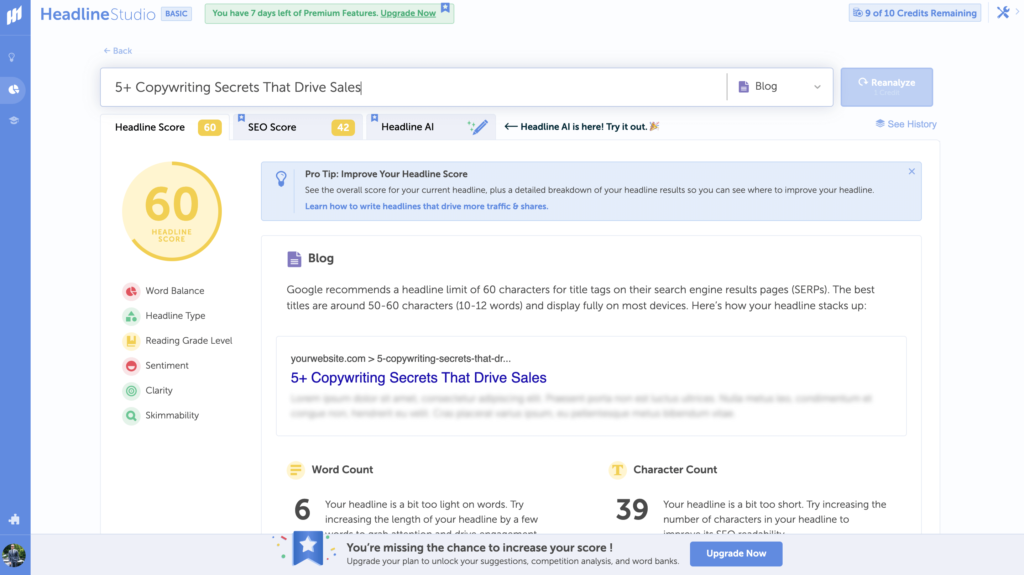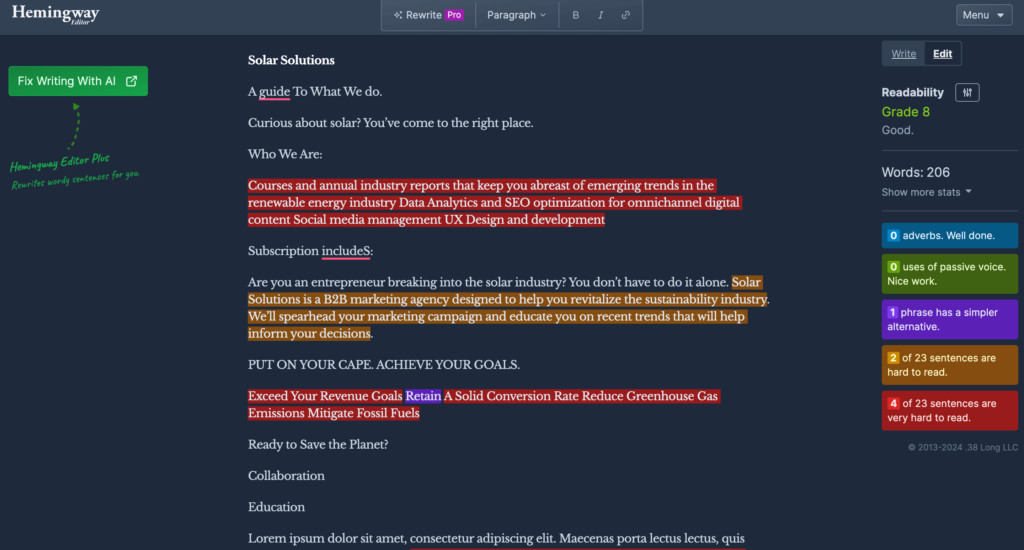One of my greatest inspirations as a copywriter and marketer is the legend himself: David Ogilvy. His copywriting prowess reshaped the advertising landscape, leaving an indelible mark on generations of marketers.
After all, he didn’t sell his advertising agency for $864 million for no reason…
But what exactly made Ogilvy’s approach to copywriting so legendary? And more importantly, how can modern marketers harness his wisdom to craft compelling messages that resonate with audiences in today’s digital age?
In this blog post, I will break down copywriting tips and strategies from David Ogilvy himself. These will help you drive more sales and business growth.
Understanding the Foundation of David Ogilvy’s Copywriting
David Ogilvy wasn’t just a copywriter; he was a master of persuasion, a virtuoso of words that stirred emotions and moved masses. But beneath the brilliance of his campaigns lay a solid foundation built on principles that have stood the test of time.
A fascinating thing I learned about Ogilvy is that during World War II, he worked for the British Intelligence Service. He was trained in secret intelligence, sabotage, and close combat which no doubt played a role in how he viewed advertising.
At the core of Ogilvy’s approach was the relentless pursuit of understanding his audience. He didn’t just guess what people wanted; he delved deep into their minds, uncovering their desires, fears, and aspirations. This meticulous research laid the groundwork for his iconic campaigns, ensuring every word resonated with his target audience.
Clarity and simplicity were the hallmarks of Ogilvy’s copywriting. He believed in cutting through the clutter and delivering a message that was crystal clear. No jargon, no fluff—just straightforward, compelling communication that spoke directly to the reader.
But perhaps the most powerful weapon in Ogilvy’s arsenal was his understanding of psychology and persuasion. He knew how to tap into the subconscious desires of his audience, creating narratives that tugged at their emotions and compelled them to take action.
Here’s a great interview you can watch to learn more about his approach to advertising:
By using Ogilvy’s copywriting strategies, modern marketers can cut through the noise and connect with their audience on a deeper level, driving engagement and conversion like never before.
That brings me to my next point.
1. Crafting Compelling Headlines That Grab Attention
Your headline is the gateway to your content—it’s the first impression, the make-or-break moment that determines whether your audience will engage with your message or scroll on by. And nobody understood the power of headlines quite like David Ogilvy.
Ogilvy famously said, “On average, five times as many people read the headline as read the body copy.” That’s right—your headline has the potential to draw in five times more eyes than the rest of your content combined. So, how do you craft a headline that demands attention?
First and foremost, your headline should be clear and concise. Ogilvy believed in the power of simplicity, urging copywriters to avoid cleverness for its own sake and instead focus on delivering a clear message that resonates with the reader.
But clarity alone isn’t enough—your headline also needs to be compelling. Ogilvy understood the importance of tapping into the reader’s emotions, whether it’s curiosity, fear, or desire. A headline that evokes emotion is far more likely to capture attention and drive engagement.
If you want to analyze how your headlines will perform, try CoSchedule’s headline tool. Just plug in your headline, say what channel it’s for, and it will give you a breakdown of how to improve it!

One of Ogilvy’s favorite strategies was to use numbers in his headlines. Whether it’s “5 Ways to Boost Your Conversions” or “10 Secrets of Successful Copywriting,” numbers add specificity and promise tangible value to the reader, making your headline irresistible.
Finally, don’t be afraid to test different headline variations to see what resonates best with your audience. Ogilvy was a firm believer in the power of testing and optimization, and the same principles apply to headline writing. Use A/B testing to compare different headline options and refine your approach over time.
2. Writing Persuasive Body Copy
Once you’ve captured your audience’s attention with a compelling headline, the real work begins: crafting persuasive body copy that keeps them engaged from start to finish. David Ogilvy understood the power of storytelling in copywriting, and his principles continue to guide us in the art of persuasion.
Ogilvy famously said, “You cannot bore people into buying your product; you can only interest them in buying it.” This mindset is crucial when it comes to writing persuasive body copy. Your goal is not just to inform your audience but to captivate them, to weave a narrative that draws them in and compels them to take action.
But persuasion isn’t just about storytelling—it’s also about credibility. Ogilvy emphasized the importance of incorporating social proof and credibility indicators into your body copy, whether it’s testimonials from satisfied customers or statistics that demonstrate the effectiveness of your product or service.
Another key principle of persuasive body copy is structuring your message for maximum impact. Ogilvy believed in the power of simplicity and clarity, urging copywriters to avoid unnecessary complexity and focus on delivering a message that is easy to understand and digest.
Consider using a free tool like Hemingway to clean up your sales copy before publishing it or sending it off to a client.

3. Utilizing the Power of Visuals
In the fast-paced world of digital marketing, visuals are your secret weapon for capturing attention and leaving a lasting impression on your audience. David Ogilvy understood this power, and his strategies for leveraging visuals continue to shape the way we communicate in the digital age.
Ogilvy famously said, “If it doesn’t sell, it isn’t creative.” This mindset underscores the importance of using visuals not just for aesthetics, but as powerful tools for persuasion and conversion. Whether it’s eye-catching graphics, compelling images, or engaging videos, visuals have the ability to convey complex messages in an instant and evoke emotion in ways that words alone cannot.
But it’s not just about throwing together a pretty picture—Ogilvy believed in the strategic use of visuals to complement and enhance your message. Whether you’re designing a print ad, crafting a social media post, or building a website, every visual element should serve a purpose, guiding the viewer towards the desired action.
In today’s world, where attention spans are shorter than ever, the importance of visuals cannot be overstated. By following Ogilvy’s lead and strategically incorporating visuals into your marketing campaigns, you can capture attention, evoke emotion, and drive engagement like never before.
4. Testing and Optimization
Assumptions can be costly mistakes. That’s why testing and optimization are essential pillars of any successful campaign. David Ogilvy understood this principle well, often stating, “Never stop testing, and your advertising will never stop improving.”
Ogilvy’s commitment to testing and measuring results laid the foundation for his groundbreaking campaigns. He believed in the power of data-driven decision-making, using A/B testing to refine his messaging, design, and targeting for maximum effectiveness.
But testing isn’t just about finding what works—it’s also about uncovering what doesn’t. Ogilvy understood the value of failure as a learning opportunity, using unsuccessful tests to iterate and improve his strategies over time.
Lucky for us, testing has never been easier or more important. With tools like Google Analytics, Google Optimize, and split testing platforms, marketers have unprecedented access to data that can inform their decision-making and drive results.
5. Tailoring Copy to Different Platforms and Audiences
One size does not fit all. David Ogilvy recognized this truth, stating, “Never write an advertisement which you wouldn’t want your family to read. You wouldn’t tell lies to your own wife. Don’t tell them to mine.”
Ogilvy’s copywriting tips reminds us of the importance of tailoring our message to resonate with different audiences across various platforms. Each platform has its own unique quirks and nuances, and understanding these differences is key to crafting copy that truly connects with your audience.
When it comes to social media, Ogilvy’s advice is particularly relevant. He emphasized the need for authenticity and transparency, urging marketers to speak to their audience as they would to a friend. This means adapting your tone and style to fit the platform while staying true to your brand voice.
But it’s not just about the platform—it’s also about the audience. Ogilvy believed in the power of understanding your audience’s needs, desires, and pain points, and tailoring your message accordingly.
Whether you’re targeting millennials on Instagram or professionals on LinkedIn, your copy should speak directly to their unique preferences and interests.
6. Staying True to Your Brand Voice
One thing can set your copywriting and marketing apart from the rest: your brand voice. David Ogilvy once said, “The more informative your advertising, the more persuasive it will be.”
Ogilvy’s copywriting strategies emphasized the importance of consistency and authenticity in branding. Your brand voice is more than just a set of words—it’s the personality of your brand, the tone that resonates with your audience, and the promise you make to your customers.
But staying true to your brand voice is easier said than done, especially in a world where trends come and go at the speed of light. Ogilvy’s advice? Know thyself. Understand what makes your brand unique, what values you stand for, and how you want to be perceived by your audience.
Once you’ve defined your brand voice, it’s crucial to maintain consistency across all channels and touchpoints. Whether you’re crafting a blog post, posting on social media, or creating an advertisement, your brand voice should shine through loud and clear.
But consistency doesn’t mean stagnation. Ogilvy believed in the power of evolution, urging brands to adapt and grow with their audience while staying true to their core values. As your brand evolves, so too should your brand voice—keeping it fresh, relevant, and engaging for your audience.
Wrapping Up David Ogilvy Copywriting Tips
As we wrap up our journey through the timeless copywriting wisdom of David Ogilvy, it’s clear that his principles continue to shape the way we communicate and connect with audiences in the digital age. Here are the key takeaways to remember:
- Understand your audience: Dive deep into their minds, desires, and fears to craft messages that resonate.
- Craft compelling headlines: Grab attention with clear, compelling, and curiosity-inducing headlines.
- Write persuasive body copy: Tell stories, build credibility, and keep it simple yet impactful.
- Utilize the power of visuals: Enhance your message with eye-catching graphics and engaging videos.
- Test and optimize: Continuously measure and refine your strategies for maximum effectiveness.
- Tailor copy to different platforms and audiences: Adapt your message to fit the unique preferences and interests of your audience.
- Stay true to your brand voice: Consistency and authenticity are key to building trust and loyalty.
Want mentorship and a community of copywriters? Join my copywriting academy today!














